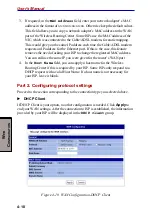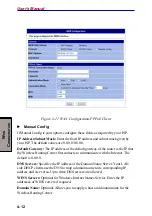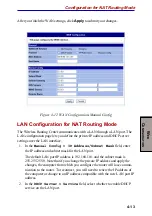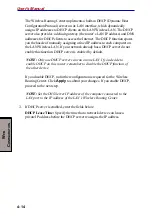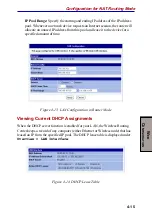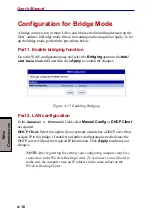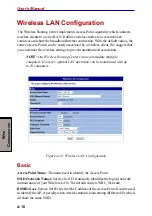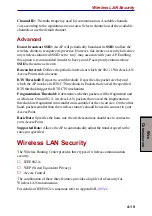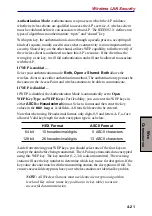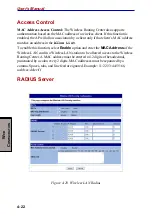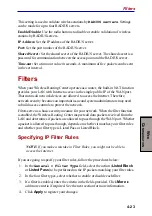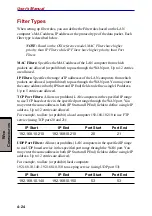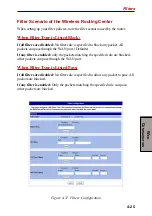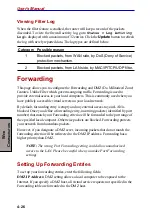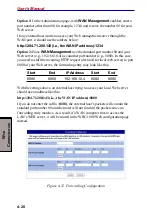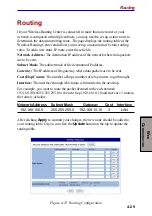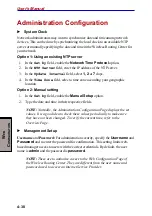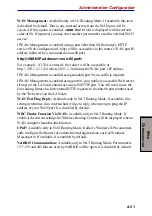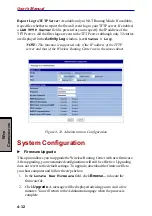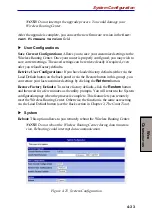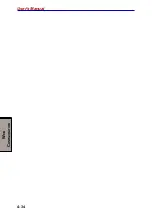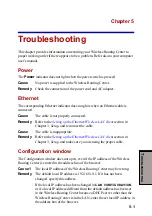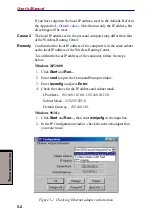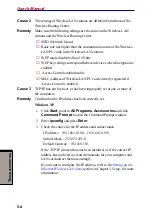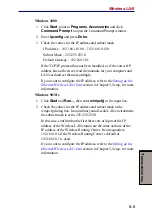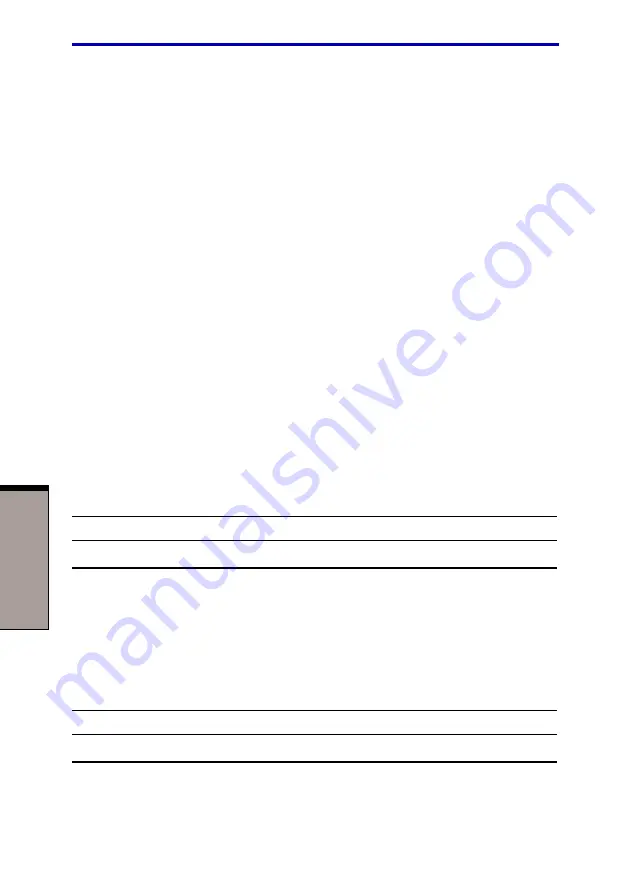
4-24
User's Manual
W
EB
C
ONFIGURATION
Filter Types
When setting up filter rules, you can define the Filter rules based on the LAN
computer’s MAC address, IP address or the protocol type of the data packet. Each
filter type is described below.
NOTE: Based on the OSI reference model, MAC Filters have higher
priority than IP Filters while IP Filters have higher priority than Port
Filters.
MAC Filters: Specifies the MAC address of the LAN computer from which
packets are allowed (or prohibited) to pass through the WAN port. Up to 12 entries
are allowed.
IP Filters: Specifies the range of IP addresses of the LAN computers from which
packets are allowed (or prohibited) to pass through the WAN port. You may enter
the same address in both (IP Start and IP End) fields to define a single IP address.
Up to 5 entries are allowed.
TCP Port Filters: Allows (or prohibits) LAN computers in the specified IP range
to use TCP based service in the specified port range through the WAN port. You
may enter the same address in both (IP Start and IP End) fields to define a single IP
address. Up to 12 entries are allowed.
For example, to allow (or prohibit) a local computer 192.168.10.210 to use FTP
service (using TCP port 20 and 21):
IP Start
IP End
Port Start
Port End
192.168.10.210
192.168.10.210
20
21
UDP Port Filters: Allows (or prohibits) LAN computers in the specified IP range
to use UDP based service in the specified port range through the WAN port. You
may enter the same address in both (IP Start and IP End) fields to define a single IP
address. Up to 12 entries are allowed.
For example, to allow (or prohibit) local computers
192.168.10.140~192.168.10.150 to use ping service (using UDP port 53):
IP Start
IP End
Port Start
Port End
192.168.10.140
192.168.10.150
53
53

